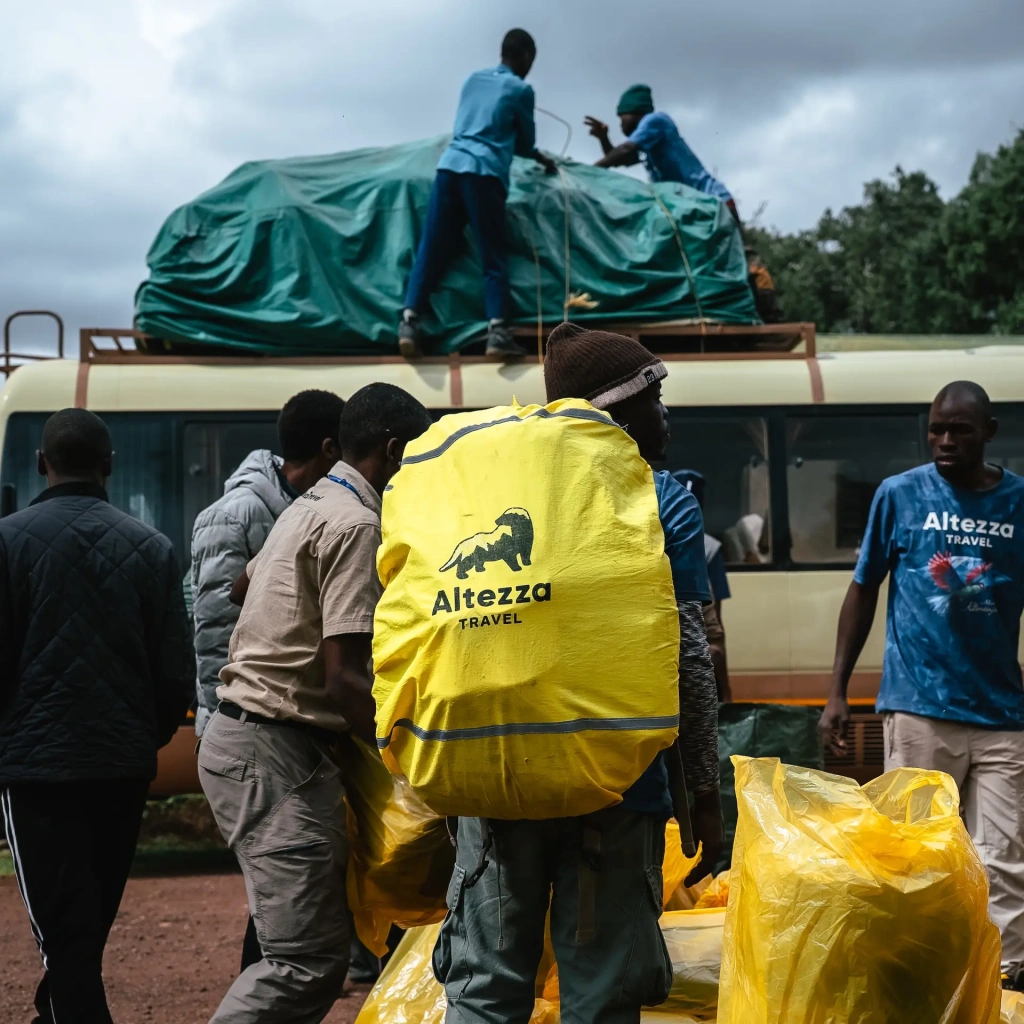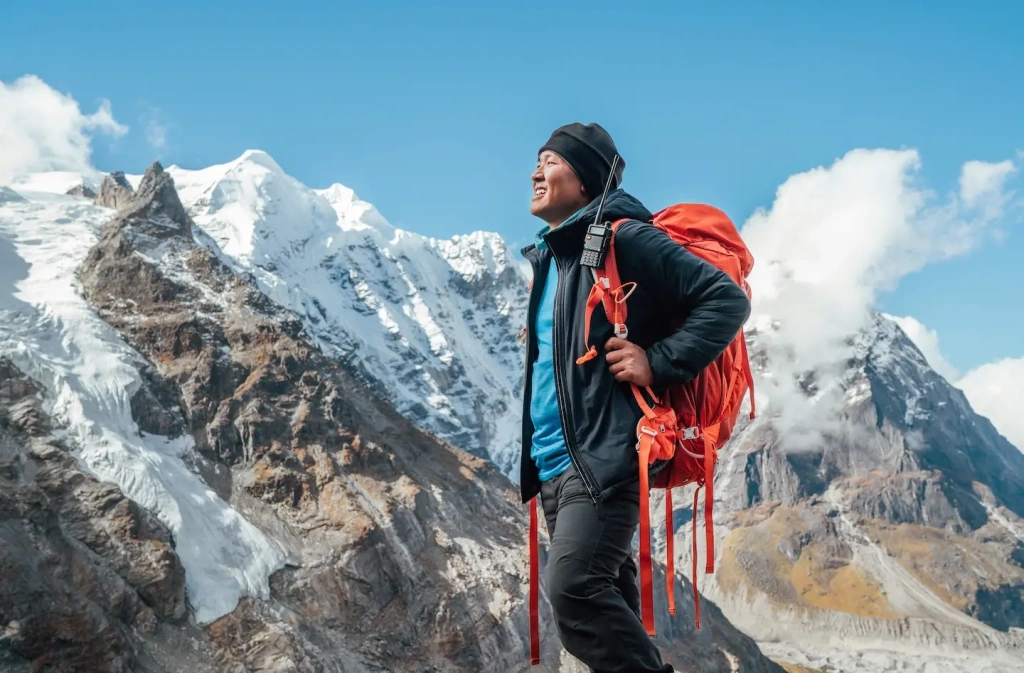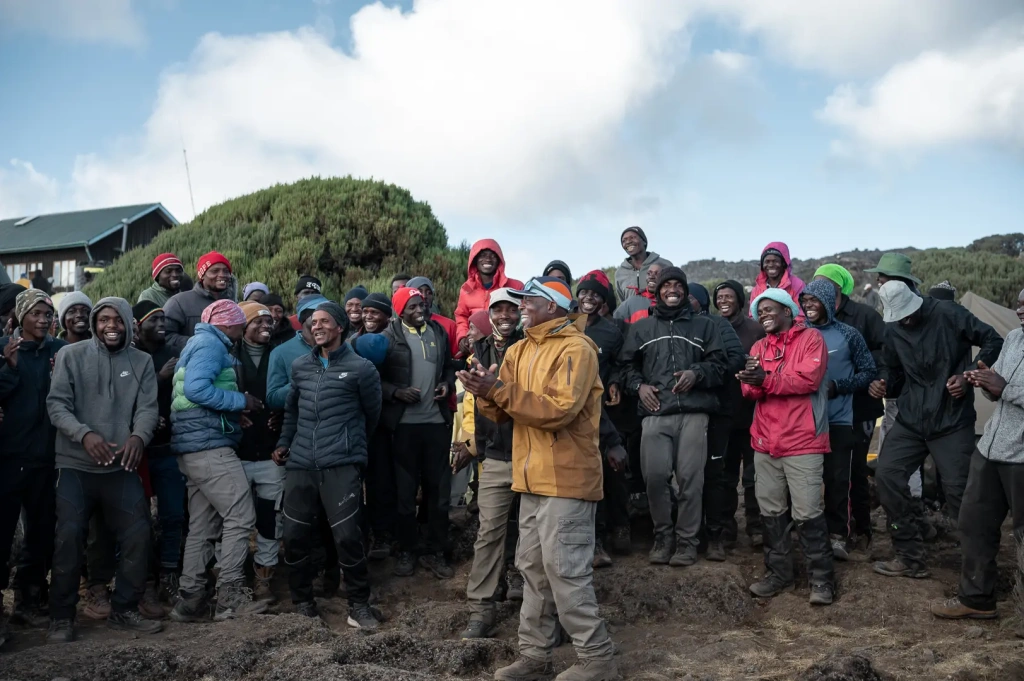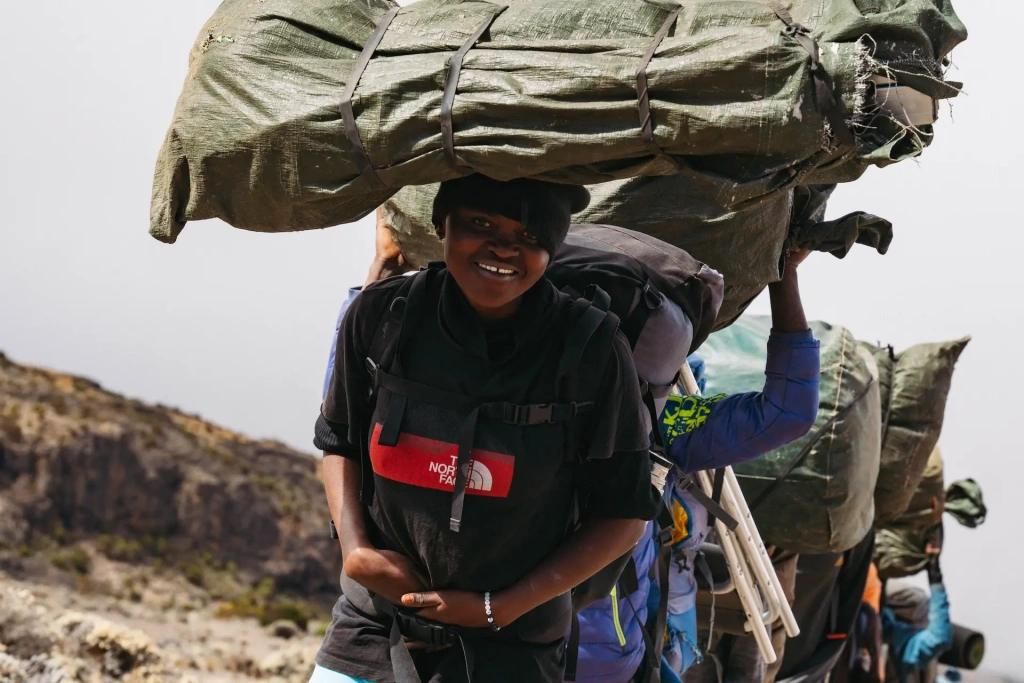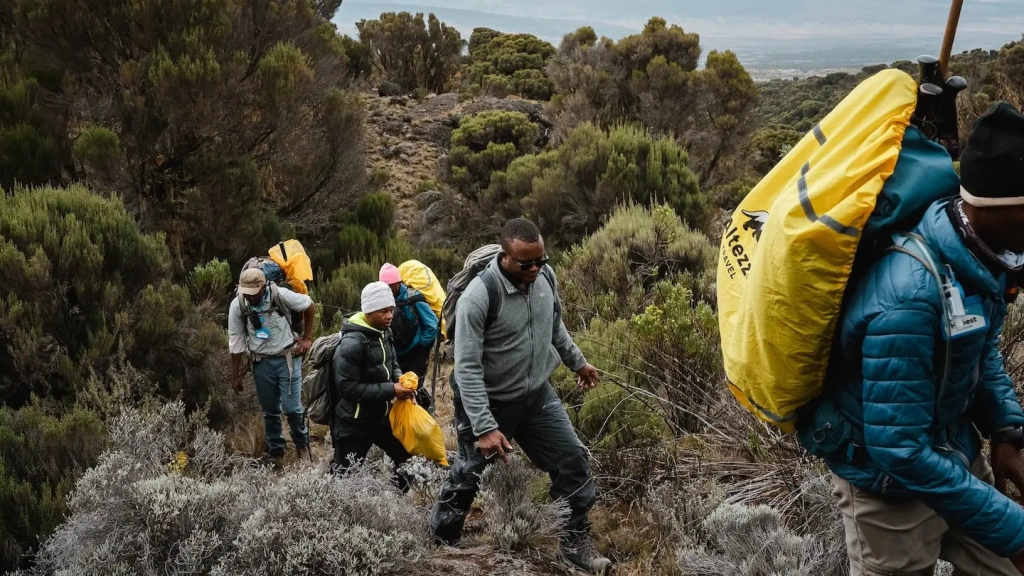Climbers who attempt to summit Kilimanjaro on an accelerated schedule put the health and lives of everyone in the expedition at risk, including the support team. Each year, up to 10 porters die on Africa’s highest mountain due to complications of altitude sickness or accidents. These are the people who carry equipment, tents, and food, assist guides during the summit push, and ensure that the group is comfortable in the camps.
They are often mistakenly compared to Sherpas — the guides and porters on Everest and other Himalayan peaks who have lived at high altitude for generations and therefore have innate acclimatization. Kilimanjaro porters do not. Why this is important when choosing a program for climbing the “Roof of Africa” is explained in this article from Altezza Travel.
Sherpas: when altitude is in your genes
Sherpas are an ethnic group from the Khumbu Valley in Nepal. Their ancestors migrated to the region from Eastern Tibet several hundred years ago. Generations of life at elevations from 2,000 to 5,200 meters (6,562 to 17,060 ft) above sea level have led to a natural adaptation to high altitude.
The modern image of Sherpas was shaped after the 1953 expedition, when New Zealand climber Edmund Hillary and Sherpa Tenzing Norgay became the first people to summit Everest. Later, other Sherpas also became famous worldwide. A notable example is Ang Rita, who in December 1987 became the first person in history to summit Everest in winter without supplemental oxygen. In total, he completed ten ascents of the world’s highest peak.
When researchers tried to understand the Sherpas’ almost “superhuman” abilities, they discovered unique genetic traits. Sherpas do not experience a sharp increase in hemoglobin levels in low-oxygen environments, which reduces the risk of thickened blood and edema associated with altitude sickness. Their lungs and heart deliver oxygen efficiently, and their muscles use it economically. This allows them to handle heavy physical exertion in thin air.
But even this does not make them invulnerable. According to the Himalayan Database, from 1950 to 2019, more than 290 Sherpas died on eight-thousanders. The main causes were falls, avalanches, and collapsing glaciers. Twenty-two deaths were caused by altitude sickness. For many Western climbers, risk may seem like part of the adventure, but for Sherpas, it is simply a dangerous job.
Tanzanian porters: from the foothills to the summit of Kilimanjaro
Unlike Sherpas, porters do not have innate acclimatization. Most live around Kilimanjaro at elevations up to 1,500 meters (4,920 ft), and many come from southern and central Tanzania, where elevations are even lower. During the high season (from late December to early March and from mid June to late October), porters may complete up to two climbs per month. With this frequency, the ascent becomes easier. In the low season, when Tanzania experiences heavy rains and fewer trekkers are visiting, there is usually only one expedition per month, or none at all. After such breaks, porters need acclimatization just as all other participants do. Meanwhile, they must work physically throughout the climb — carrying gear, setting up tents, bringing water, and handling everyday camp tasks.
Unfortunately, not all operators provide safe working conditions. Many do not supply proper gear or three daily meals, do not conduct medical checks during expeditions, and do not help porters descend when they become ill. As a result, up to 10 porters die on Kilimanjaro every year due to altitude sickness or accidents.
In Altezza Travel expeditions, there has never been a fatality. However, in 2024, we had to organize three helicopter evacuations for our porters. Insurance policies do not cover mountain crews, so we pay for all expenses ourselves.
This is despite using only high-quality gear, providing nutritious meals, conducting daily medical checks, and supplying our teams with two types of medical kits and access to more than 500 oxygen systems. We create the safest working environment possible, but even our porters sometimes need to be evacuated.
Unfortunately, not all operators treat their teams responsibly. Sometimes our guides encounter exhausted porters showing obvious symptoms of altitude sickness, provide first aid, give medication, and help arrange their evacuation.

A rapid ascent is a risk for the entire team.
Some travelers want to reach the highest point in Africa as quickly as possible — in three, four, or five days, rather than the recommended six to eight. When choosing a program, several important points must be considered:
- Kilimanjaro is considered ideal for non-professionals. You do not need technical climbing equipment or previous mountaineering experience. The route has no technical sections, and the ascent is essentially trekking with overnight stays in camps. The most demanding part is the summit push, which requires good physical condition.
- Uhuru Peak, the highest point of the volcano, is at 5,895 meters (19,341 ft). Reaching this altitude safely requires gradual acclimatization, with a slow, steady gain in elevation. This applies to all expedition members, including the support team. Without proper acclimatization, altitude sickness may develop, and in severe cases, it can lead to pulmonary or cerebral edema.
This is why we explain two important things to travelers who want to shorten their climbing itinerary:
- A fast multi-day ascent is an unreasonable risk to the entire team. The fastest ascent of Uhuru Peak belongs to Swiss Ecuadorian sky runner Karl Egloff, with a time of 6 hours 42 minutes, including descent. Such ascents are never part of a regular tourist itinerary. They are carefully planned expeditions involving professional athletes with proper acclimatization and extensive experience.
- A shortened program deprives climbers of the experience itself. The ascent is not only about long hikes between camps. It is about spectacular scenery, conversations with the guide about local tribes, plants, and animals, and dinners at altitude after a full day of trekking. With a speed ascent, your attention will focus entirely on how you feel.
The safety and comfort of both climbers and the mountain crew are absolute priorities for Altezza Travel. But some travelers choose local operators who agree to any request. Sadly, this sometimes leads to tragedy — the death of a porter. And the group may never know. The porter may be evacuated secretly at night or left in the tent until morning, when the group moves to the next camp. This is done to avoid “spoiling” the clients’ impression of the expedition.
Why do porters take such risks?
Tanzania is a developing country, and porter work is one of the few ways to earn a stable income. There are also career opportunities in the climbing industry. By learning English, a porter can eventually become a guide with a good salary. For this chance, young men are willing to take on any job.
Is there a way to reach the summit quickly without endangering the mountain crew?
Yes. If you are an experienced climber and confident in your abilities, you can arrange a safe expedition on a shortened program. In such cases, we recommend assigning two support teams to ensure smooth acclimatization. The first team goes ahead, slowly reaches the summit camp, and waits for the climbers there. The second team accompanies the group to that camp but does not go to the summit. This way, everyone acclimatizes properly, and no one is put at risk. The only drawback is that these logistics increase the expedition's cost by about 50 percent.
That is why we recommend a reliable, straightforward solution: choose classic Kilimanjaro routes with gradual acclimatization. We particularly recommend the Lemosho Route for seven or eight days, as well as the Rongai and Machame routes for seven days.

All content on Altezza Travel is created with expert insights and thorough research, in line with our Editorial Policy.
Want to know more about Tanzania adventures?
Get in touch with our team! We've explored all the top destinations across Tanzania. Our Kilimanjaro-based adventure consultants are ready to share tips and help you plan your unforgettable journey.















